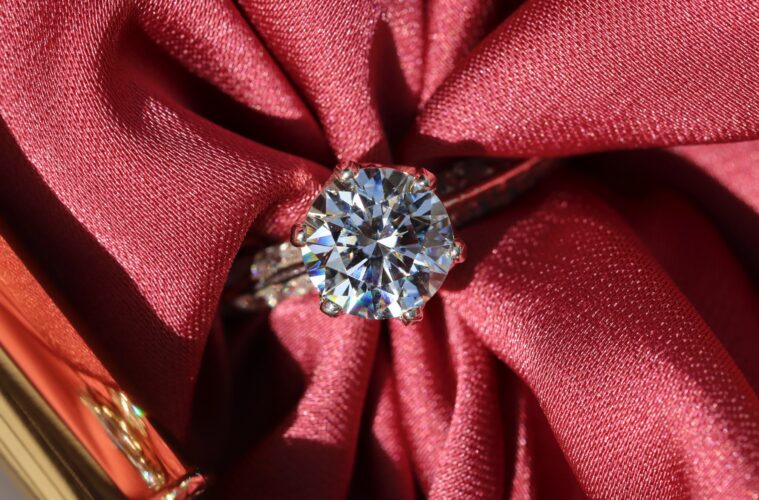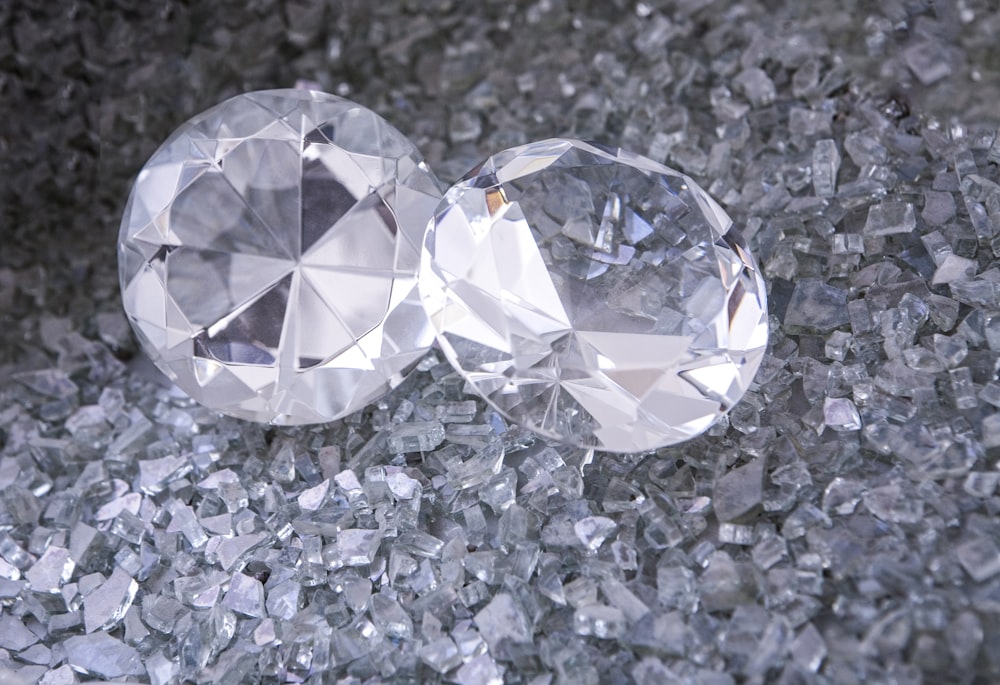Diamonds have long held a special place in our hearts as symbols of love, luxury, and timeless beauty. However, not all diamonds are created equal. In recent years, there has been a surge in the popularity of lab-grown diamonds as an alternative to their natural counterparts. This has sparked a growing curiosity about the differences between natural and lab diamonds. Are they truly the same, or are there distinct characteristics that set them apart? In this article, we’ll delve into the intricate world of diamonds and explore the fundamental disparities between these two types of gemstones.
Origin and Formation
Natural Diamonds:
Natural diamonds have captivated humanity for centuries with their origin story that begins deep within the Earth’s mantle. Over billions of years, extreme pressure and heat cause carbon atoms to crystallize, forming these precious gems. They are mined from various locations worldwide, each with its unique geological history. This geological diversity accounts for the vast range of natural diamond colors and impurities, making each one truly unique.
Lab Diamonds:
In contrast, lab-grown diamonds are produced through a fascinating process that replicates the natural diamond formation but accelerates it within controlled environments. Scientists simulate high-pressure, high-temperature conditions or utilize chemical vapor deposition methods to grow diamonds atom by atom. While these lab diamonds share the same chemical and physical properties as natural diamonds, they lack the geological heritage and unique character of their naturally occurring counterparts.
Cost and Environmental Impact
Natural Diamonds:
The allure of natural diamonds comes with a hefty price tag, primarily due to the costs associated with mining, cutting, and distribution. Beyond their financial cost, the environmental impact of diamond mining has been a growing concern. Large-scale mining operations can result in habitat destruction, soil erosion, and the release of greenhouse gases, contributing to ecological harm and global warming. Additionally, the industry has faced issues related to ethical concerns, such as the sourcing of conflict diamonds.
Lab Diamonds:
One of the most significant advantages of lab-grown diamonds is their relatively lower cost. Since they bypass the expensive mining process and reduce the environmental impact associated with natural diamond extraction, lab diamonds are often more budget-friendly. Moreover, these gems are considered ethically superior, as they avoid the risk of being conflict diamonds, aligning with consumers’ increasing awareness and demand for sustainable and responsibly sourced products. The reduced environmental footprint and ethical clarity make lab-grown diamonds an attractive choice for conscientious buyers.
Rarity and Unique Features
Natural Diamonds:
Natural diamonds’ rarity and the storied journey of their formation contribute to their appeal and status as coveted heirlooms. Their characteristics, including inclusions and distinct color variations, create a unique fingerprint in each stone. For many, owning a natural diamond symbolizes a connection to Earth’s history and a sense of timeless beauty that can be passed down through generations.
Lab Diamonds:
While lab-grown diamonds may lack the geological age and distinct origins of natural diamonds, they offer unique features of their own. Their consistent quality, free from natural impurities, allows for a predictable and standardized grading system. Lab diamonds can be produced in larger sizes and with fewer blemishes, offering consumers the opportunity to acquire larger and more flawless stones without the exorbitant price tag associated with their natural counterparts.
Specific Considerations
Lab-Grown Diamonds for Jewelry:
In recent years, lab-grown diamonds have gained significant traction as the ideal choice for jewelry enthusiasts. These diamonds offer several distinct advantages when adorning yourself with exquisite pieces. Firstly, lab-grown diamonds are more affordable, allowing you to acquire larger and more stunning gems for your jewelry collection. Whether you’re looking for an engagement ring, a pair of earrings, or a pendant, the cost-effectiveness of lab-grown diamonds can’t be denied.
Customization and Quality:
Lab-grown diamonds also provide the opportunity for customization. With their consistent quality and clarity, jewelers can craft stunning pieces without worrying about natural impurities. Moreover, lab-grown diamonds come in a variety of shapes and sizes, making it easier to create bespoke jewelry that perfectly matches your style and preferences. Whether you desire a classic round-cut solitaire or a unique fancy-shaped diamond, lab-grown diamonds offer versatility in design.
Natural Diamond Durability:
One of the qualities that make natural diamonds so revered is their exceptional hardness. Diamonds are the hardest known natural substance on Earth, earning a perfect 10 on the Mohs scale of mineral hardness. This exceptional hardness makes natural diamonds highly resistant to scratching and damage, ensuring that they maintain their brilliance and sparkle for generations with minimal maintenance.
Environmental and Ethical Benefits:
When choosing lab-grown diamonds for your jewelry, you can rest assured knowing that you’re making an eco-conscious and ethical decision. By avoiding the environmental toll of mining and sidestepping the ethical concerns associated with the natural diamond industry, you contribute to a more sustainable and responsible jewelry market. Lab-grown diamonds are not only beautiful but also align with the values of those who prioritize ethical and environmentally friendly choices.
Investment and Resale Value
Investment Considerations:
For some, diamonds are not only cherished jewelry pieces but also potential investments. When evaluating the investment potential of natural vs. lab-grown diamonds, it’s important to note that natural diamonds have historically held their value over time, often appreciating in worth due to their rarity and desirability. Lab-grown diamonds, on the other hand, may not possess the same investment appeal but offer a more accessible entry point for those looking to start a jewelry collection.
Resale Value:
Reselling jewelry can be a consideration for some individuals. Natural diamonds tend to have a well-established market for resale, with potential buyers seeking these precious gems for their rarity and authenticity. Lab-grown diamonds may have a more limited resale market, but their affordability can make them appealing to a broader audience, especially for those looking for beautiful jewelry without a significant initial investment.
In conclusion, the choice between natural and lab-grown diamonds for your jewelry ultimately depends on your personal preferences, values, and priorities. Both types of diamonds offer unique advantages, whether it’s the natural beauty and rarity of natural diamonds or the affordability and ethical appeal of lab-grown diamonds. Understanding the differences and advantages of each can help you make an informed decision when selecting the perfect diamond for your jewelry collection.
Published by HOLR Magazine.




